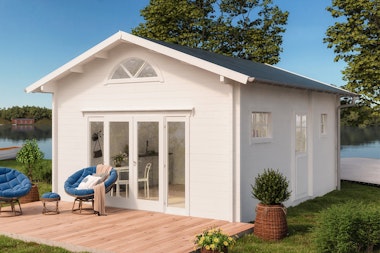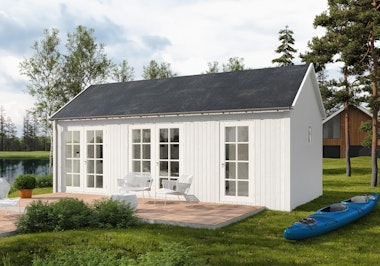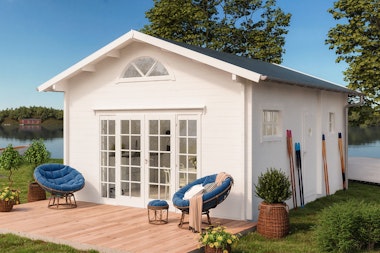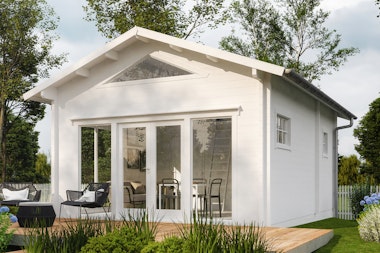
What is the U-factor?
Andreas Lindberg / 2 min reading / U-value
The U-factor, or U-value, is a term much used by savvy builders, but what does it mean and how big a role does it play? Let's find out.
The U-factor is the measure of a material's thermal insulating properties. The lower the U-factor, the better the material is at insulating, because the U-factor actually measures how much energy you lose. If you're not afraid of seeming like a bit of a know-it-all, you can call it the 'heat transfer coefficient'.
How is the U-factor calculated?
You can in theory calculate the U-factor for all types of materials, but the term is most often used in connection with windows and doors. If you want to, it's possible to calculate how much energy loss you’ll experience with a high U-factor compared to a low one. All you need to know for the equation is how big the windows are and the difference between the outside and inside temperature. You then multiply the area in square metres and the temperature difference by the U-factor. If you don't want to use a calculator, there are apps you can download to do this.
It's more difficult to calculate how cold it will actually be inside the house during the years the windows will be in there and in practice there are probably few homeowners who do these calculations. However, it's good to at least understand the principle.
A good window should keep the cold air outside and the hot air inside. In windows with a higher U-factor, it will feel colder when it's cold outside. This can become so noticeable inside the house that you can easily check it by standing by a window and feeling the cold coming off the glass surface of the window. If it's not noticeable by the temperature, it's guaranteed to be noticeable in your electricity bill. Just like with poor insulation in walls, floors and ceilings, it's more expensive to heat a house whose doors and windows have a high U-factor.
Is it time to change the windows?
Why not just replace all the windows with new ones with a low U-factor? In theory it's a win for both your wallet and the environment, right? Sadly, it's not that simple. In older houses, it's difficult to recoup an investment in new windows with a lower U-factor, because unless the rest of the house is well insulated, it makes little difference to switch to windows that are better insulators. It's a bit like putting on warm boots in Antarctica so as not to freeze to death, while wearing shorts and no shirt. Replacing windows also costs money, even if you do the work yourself.
When buying/building new, however, it's often worth giving the windows' U-value a thought. In a new, well-insulated house that will be heated in winter, you should aim for windows and doors with a U-factor of 1-1.4. Especially if it's going to be in a cold location up in the north. If the house is mainly used in the summer, you can use your time and money for something else.
Polhus often has a U-factor of 1.1 on windows and doors in the larger houses, and so meets the requirements by a good margin. This is especially important in houses with large glass sections because windows with poor insulating properties risk becoming a costly waste of energy. However, there are also cheaper options with a higher U-factor and thinner walls. These are fine for people who only want a summer house, as it's unnecessary to spend money on something that's not necessary.
The best way to get started - our guide!

The best way to get started - our guide!
The assembly guide contains valuable tips and advice from our construction experts. A good base and a manual for those who plan to assemble the house themselves. We walk you through what’s important to consider before starting construction, the foundation options our experts recommend, and how the assembly works.
Read all about this and much more in our guide. We will send the assembly guide free of charge to your email. Good luck with your project!










